AAVE (Aave)
AAVE plays a central role in the management of the Aave lending/borrowing software. Aave is a decentralised non-custodial liquidity market protocol where users can participate as depositors or borrowers. AAVE derives value from its finite supply, and the fact that it uses revenue from fees on its lending/borrowing software to buy AAVE and remove the cryptocurrency from circulation.
BAT (Basic Attention Token)
BAT is an Ethereum token that powers Brave Software’s blockchain-based digital advertising platform. The Basic Attention Token is a utility token based on the Ethereum technology that can also be used as a unit of account between advertisers, publishers, and users in a new, blockchain-based digital advertising and services platform.
BCH (Bitcoin Cash)
BCH is a cryptocurrency that was “forked” from Bitcoin (BTC), the world’s largest cryptocurrency, in 2017 due to a division over the future of the protocol. What does that mean? A fork happens whenever a community makes a change to the blockchain’s protocol, or basic set of rules, that results in a new blockchain. In the case of Bitcoin Cash, the community set out to create a cryptocurrency that’s better suited than Bitcoin for cheap, every day payments.
BTC (Bitcoin)
The world’s first cryptocurrency, Bitcoin is stored and exchanged securely on the internet through a digital ledger known as a blockchain. Bitcoins are divisible into smaller units known as satoshis — each satoshi is worth 0.00000001 bitcoin.
COMP (Compound)
Compound (COMP) is an Ethereum token that enables community governance of the Compound protocol. The protocol is a series of decentralized interest rate markets that allow users to supply and borrow Ethereum tokens at variable interest rates.
DAI
Dai (DAI) is a decentralized stablecoin running on Ethereum (ETH) that attempts to maintain a value of $1.00 USD. Unlike centralized stablecoins, Dai isn’t backed by US dollars in a bank account. Instead, it’s backed by collateral on the Maker platform. Note: if the Dai credit system is upgraded or shutdown, Dai holders may need to convert their Dai to Ethereum through the Maker platform.
ETC (Ethereum Classic)
Ethereum Classic is a cryptocurrency with a special focus on immutability, popularly expressed as “code is law.”
ETH (Ethereum)
Ethereum is a decentralized blockchain platform that establishes a peer-to-peer network that securely executes and verifies application code, called smart contracts. Smart contracts allow participants to transact with each other without a trusted central authority. Transaction records are immutable, verifiable, and securely distributed across the network, giving participants full ownership and visibility into transaction data. Transactions are sent from and received by user-created Ethereum accounts. A sender must sign transactions and spend Ether, Ethereum’s native cryptocurrency, as a cost of processing transactions on the network.
GRT (The Graph)
GRT is an Ethereum token that powers The Graph, a decentralized protocol for indexing and querying data from blockchains. Just as Google indexes the web, The Graph indexes blockchain data from networks like Ethereum and Filecoin. This data is grouped into open APIs called subgraphs that anyone can query.
LINK (Chainlink)
Chainlink (LINK) is an Ethereum token that powers the Chainlink decentralized oracle network. This network allows smart contracts on Ethereum to securely connect to external data sources, APIs, and payment systems.
LPT (Livepeer)
LPT is an Ethereum token that powers the Livepeer network, a platform for decentralized video streaming. LPT is required to perform the work of transcoding and distributing video on the network while also incentivizing peers to ensure that the network is cost-effective and secure.
LTC (Litecoin)
Litecoin is a cryptocurrency that launched in 2011 to complete cryptocurrency transactions quickly and cheaply. It was developed using a copy of Bitcoin’s source code, and it is one of the first altcoins, a term used to refer to every cryptocurrency other than the market leader Bitcoin. Litecoin is a cryptocurrency that uses a faster payment confirmation schedule and a different cryptographic algorithm than Bitcoin.
MANA (Decentraland)
Decentraland (MANA) is an Ethereum token that powers the Decentraland virtual reality platform. MANA can be used to pay for virtual plots of land in Decentraland as well as in-world goods and services.
MKR (Maker)
Maker is an Ethereum token that describes itself as “a utility token, governance token, and recapitalization resource of the Maker system.” The purpose of the Maker system is to generate another Ethereum token, called Dai, that seeks to trade on exchanges at a value of exactly US$1.00.
UNI (Uniswap)
Uniswap (UNI) is an Ethereum token that powers Uniswap, an automated liquidity provider that’s designed to make it easy to exchange Ethereum (ERC-20) tokens. There is no orderbook or central facilitator on Uniswap. Instead, tokens are exchanged through liquidity pools that are defined by smart contracts.
XLM (Stellar Lumen)
Stellar’s cryptocurrency, the Stellar Lumen (XLM), powers the Stellar payment network. Stellar aims to connect the world’s financial system, enabling businesses and developers to take advantage of the network’s fast speeds, low transaction costs, and interoperability.
YFI (Yearn.finance)
Yearn.finance (YFI) is an Ethereum token that governs the Yearn.finance platform. The platform is a yield optimizer that moves funds around the decentralized finance (“defi”) ecosystem in an effort to generate a high return.
ZEC (ZCash)
Zcash is a cryptocurrency that offers two types of addresses: transparent addresses that are publicly visible on the Zcash blockchain and shielded addresses that are more private. Coinbase customers can receive Zcash from both transparent and shielded addresses and send Zcash to transparent addresses. Sending to shielded addresses is not supported at this time.


